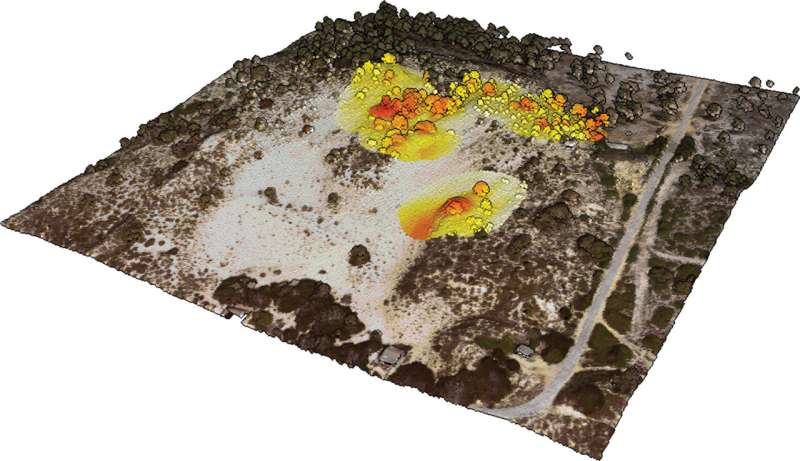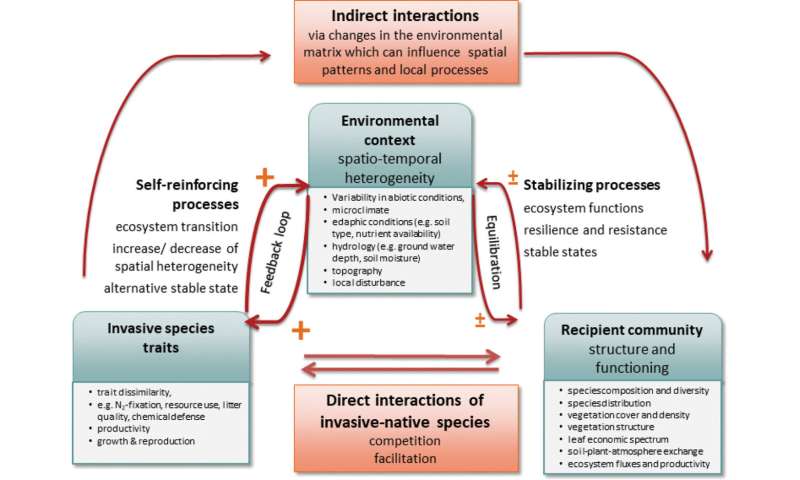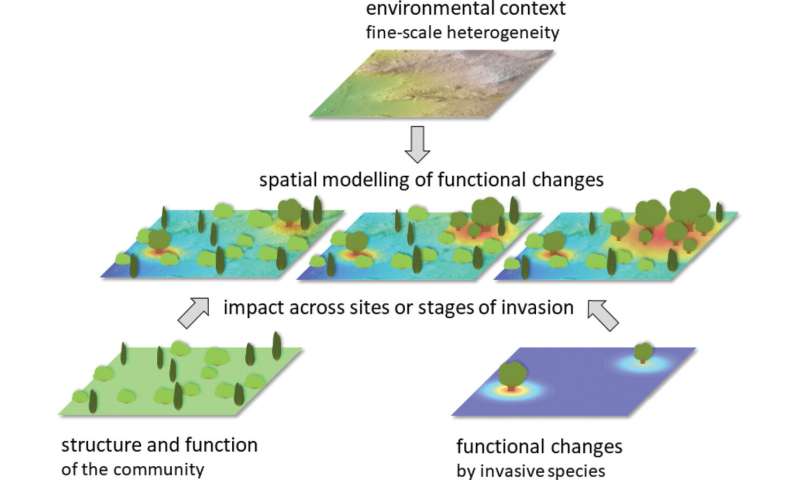This article has been reviewed according to Science X's editorial process and policies. Editors have highlighted the following attributes while ensuring the content's credibility:
fact-checked
peer-reviewed publication
trusted source
proofread
A new advanced framework to assess the impact of invasive plants on ecosystems

Researchers from the University of Freiburg and Justus Liebig University Giessen have developed a framework to better assess the impact of invasive plant species on ecosystems.
Outlined in a study published in the journal NeoBiota, the framework combines new technologies and techniques to learn and predict how invasive plants alter ecosystems over time and in different environments.
Invasive plant species threaten biodiversity and ecosystem health worldwide. However, predicting the exact impact of these invasions is challenging due to the complexity of interactions between invading species, native communities, and impacted ecosystems.
The new framework addresses this challenge by integrating several advancements:
- Environmental mapping: Progress in remote sensing and ecological monitoring allow researchers to capture detailed information about the environmental conditions of invaded areas. Drones, satellites, and advanced sensory networks can be used to create detailed ecosystem maps, which show how invasive species interact with their environment.
- Functional tracers: These are specific indicators that reflect changes in ecosystem functions caused by invasive species. For example, nitrogen isotopes can be used to track the impact of nitrogen-fixing invasive plants on ecosystems.
- Spatio-temporal modeling: By combining environmental data with new modeling techniques, such as AI, researchers can create detailed models showing the spread and impact of invasive species on ecosystems over time. Such models can predict how changes in environmental conditions, such as climate change, might influence an invasive species' success.
-

Mechanisms determine plant invasion impact. Examples of important factors for each category are given in the boxes. Credit: Werner et al. -

Framework for integrating fine-scale environmental heterogeneity and functional changes into spatial models of invader-ecosystem interactions. Credit: Werner et al.
"The framework we've introduced offers researchers deeper insights into how invasive plant species interact with their environments, enabling more targeted management to lessen their ecological impact. We advocate for stronger collaboration between ecologists and technical experts to refine and expand these methods," the authors emphasize.
"Going forward, further research and integration of the wide range of recent methods and tools are needed to enhance the framework's effectiveness," they conclude.
More information: Christiane Werner et al, An integrative framework to assess the spatio-temporal impact of plant invasion on ecosystem functioning, NeoBiota (2024). DOI: 10.3897/neobiota.94.126714
Journal information: NeoBiota
Provided by Pensoft Publishers





















